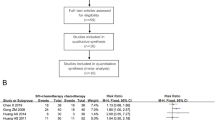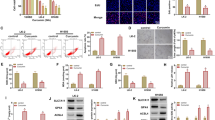Abstract
Objectives
To investigate the role of prolyl 4-hydroxylase beta polypeptide (P4HB) expressed in lung carcinoma and the intervention effect of Yiqi Chutan Formula (益气除痰方, YQCTF).
Methods
Lung carcinoma model was established by subcutaneously inoculating LEWIS lung carcinoma cells in C57BL/6J mice. The differential expression of P4HB protein between the YQCTF (3.0 g/kg, gavage, once daily, 21 days) group and the control group was acquired by a 2 fluorescence difference gel electrophoresis (2D-DIGE), verified by Western blotting and identified by matrix-assisted laser desorption ionization time of flight mass spectrometry (MALDI-TOF/TOF-MS). The expression of P4HB and P4HB mRNA in cultured A549 cells from cisplatin (DDP) 1.5 µg/mL group and 15% serum combined with DDP 1.5 µg/mL group were detected by cellular immunohistochemistry and reverse transcription-polymerase chain reaction, respectively.
Results
The proteomics research discovered that one-third of differential proteins including P4HB were decreased in the YQCTF group (P<0.01). Clinical pathology and tissue microarray studies showed that P4HB expression in lung cancer tissue was stronger than adjacent tissues and normal lung epithelial (P<0.01). In the YQCTF and DDP combined groups, the expression of P4HB and P4HB mRNA in A549 cell were decreased significantly (P<0.01).
Conclusion
YQCTF could inhibit the LEWIS lung carcinoma's growth, decrease the expression of P4HB in LEWIS lung carcinoma and A549 cells. YQCTF might take effect through regulating P4HB in endoplasmic reticulum to inhibit the incidence and growth process of lung carcinoma.
Similar content being viewed by others
References
Wang SM, Lin LZ, Zhou JG. Effects of Yiqi Chutan Recipe on tumor growth, survival time and expressions of PRDX-1 and PRDX-6 in Lewis lung carcinoma model mice with Pi (Spleen)-deficiency syndrome. Chin J Integr Tradit West Med (Chin) 2011;31:99–103.
Wang SM, Lin LZ, Zhou JG, Xiong S, Zhou D. Effects of Yiqi Chutan Tang on the proteome in LEWIS lung cancer in mice. Asian Pac J Cancer Prev 2011;12:1665–1669.
Xiong SQ, Lin LZ, Long QD. Medical systems biology research in review. J Tradit Chin Med (Chin) 2010;51:392–394.
Chinese Pharmacopoeia Gmmission. Pharmacopoeia of the People's Republic of China. 2010.
Martinez-Pinna R, Lopez JA, Ramos-Mozo P, Blanco-Colio LM, Camafeita E, Calvo E. Identification of novel biomarkers of abdominal aortic aneurysms by 2D-DIGE and MALDI-MS from AAA-thrombus-conditioned media. Methods Mol Biol 2013;1000:91–101.
Blomberg A, Blomberg L, Norbeck J, Fey SJ, Larsen PM, Larsen M, et al. Interlaboratory reproducibility of yeast protein patterns analyzed by immobilized pH gradient twodimensionalgel. Electrophoresis1995;16:1935–1945.
Penno MA, Klingler-Hoffmann M, Brazzatti JA, Boussioutas A, Putoczki T, Ernst M, et al. 2D-DIGE analysis of sera from transgenic mouse models reveals novel candidate protein biomarkers for human gastric cancer. J Proteomics 2012;77:40–58.
Kim MJ, Shin HC, Shin KC, Ro JY. Best immunohistochemical panel in distinguishing adenocarcinoma from squamous cell carcinoma of lung: tissue microarray assay in resected lung cancer specimens. Ann Diagn Pathol 2013;17:85–90.
van Zwieten A. Tissue microarray technology and findings for diagnostic immunohistochemistry. Pathology 2013;45:71–79.
http://www.ncbi.nlm.nih.gov/geoprofiles/
Pillich H, Loose M, Zimmer KP, Chakraborty T. Activation of the unfolded protein response by Listeria monocytogenes. Cell Microbiol 2012;14:949–964.
Gorres KL, Raines RT. Prolyl 4-hydroxylase. Crit Rev Biochem Mol Biol 2010;45:106–124.
Sun S, Lee D, Ho AS, Pu JK, Zhang XQ, Lee NP, et al. Inhibition of prolyl 4-hydroxylase, beta polypeptide (P4HB) attenuates temozolomide resistance in malignant glioma via the endoplasmic reticulum stress response (ERSR) pathways. Neuro Oncol 2013;15:562–577.
Chang HY, Huang HC, Huang TC, Yang PC, Wang YC, Juan HF. Ectopic ATP synthase blockade suppresses lung adenocarcinoma growth by activating the unfolded protein response. Cancer Res 2012;72:4696–4706.
Suh DH, Kim MK, Kim HS, Chung HH, Song YS. Unfolded protein response to autophagy as a promising druggable target for anticancer therapy. Ann N Y Acad Sci 2012;1271:20–32.
Author information
Authors and Affiliations
Corresponding author
Additional information
Supported by the National Natural Science Fundation of China (No. 30772862); Guangdong Natural Science Fund (No. 2010-3); Project of Guangdong University Talent Fund (No. 2010-79)
Rights and permissions
About this article
Cite this article
Wang, Sm., Lin, Lz., Zhou, Dh. et al. Expression of prolyl 4-hydroxylase beta-polypeptide in non-small cell lung cancer treated with Chinese medicines. Chin. J. Integr. Med. 21, 689–696 (2015). https://doi.org/10.1007/s11655-013-1535-2
Received:
Published:
Issue Date:
DOI: https://doi.org/10.1007/s11655-013-1535-2




